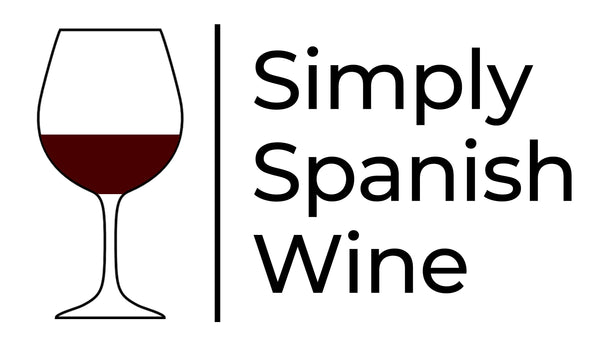We’ve hit the ground running here at Simply Spanish Wine. As everyone drifts back slowly from the beach, we’ve been out on the road visiting Bodegas Verum, one of our newest producers from La Mancha, as they begin their harvest.
The López Montero family are a bit of a winemaking oddity in Castilla La Mancha. A family-run group since 1788 believe it or not, the core focus for many years was on the distillation of wine spirit for major clients in Jerez, France, and worldwide.

Copper stills at Bodegas Verum
In fact, distillation under the Altosa brand remains key to the family’s fortunes and the wonderful vertical copper stills at the HQ in Tomelloso still churn out close to 15% of the distilled spirit which then gets used in all sorts of drinks including the finest brandies. The 8,500m2 cellar carved out of the limestone soil is home to wooden barrels, some more than one hundred years old, full of gracefully ageing brandy.
The current generation of three brothers and a sister set up Verum in 2005 to focus on still wines. Elías López Montero, the youngest of the four, is chief enologist and the driving force behind a project which has gone a long way to raise the profile – nationally and internationally - of traditional Manchegan grape varieties, winemaking traditions and an organic approach in a region more famous for bulk wines and with more hectares of vineyard than pretty much anywhere else in the world!

Elías López Montero, Chief Winemaker at Bodegas Verum
But while local varieties like Cencibel (Tempranillo) and Airén are still a key part of the winery’s DNA, Elías hasn’t been afraid to introduce new, late ripening ("ciclo largo") varieties like Malvasia Aromática – normally found much closer to the sea – Tinto Velasco, or Graciano, all of which work well in drought, maintaining much needed acidity and helping future proof the wines against rising global temperatures.
So much for the vineyard, but tradition and innovation define Elías, and Verum’s approach inside the winery too. Cube-shaped wooden barrels, for example, are a family invention which help facilitate the winemaker’s work during fermentation. And the majestic 5,000 litre tinajas or amphorae may be a throwback to the winemaking traditions of the past, but they have a practical use today, bringing a much-desired minerality to the wines; especially useful for more neutral varieties like Airén which rely on the winemaker’s skill to really bring out the best the variety has to offer.

Sorting grapes during the harvest at Bodegas Verum
As the 2022 harvest continues apace at Verum, we’ve still got some bottles from previous vintages for sale on Simply Spanish Wine. Las Tinadas is a great introduction to the Airén grape, but in this case from ungrafted vines planted more than 70 years ago! Packed with Mediterranean herbs and white fruit, it’s also got some of that steely minerality we were talking about thanks to its 4 months ageing in tinajas. Or for something a little more complex and intense, try Ulterior Parcela Nº 7 y 9 made from the white Albillo Real grape.
On the red side of the house, the Ulterior Parcela Nº 17 is made from Graciano, a red grape more commonly associated with Rioja but whose lively acidity and low alcohol levels make it well-suited to warmer climates. Finally for the more adventurous among you, why not try some orange wine? Often made from white grapes which have been left on their skins for a bit longer than usual, Verum’s Ulterior Naranja is a little different again as it’s made predominantly from the white grape Albillo Real with a handful of the (very rare) red grape Moravia Agria. What’s the trick? Well, in this case, the white grapes are treated more as if they were reds and left to macerate with their skins for two months, while the Moravia Agria grapes get whipped off the skins early on. The result: a deliciously complex wine packed with grapefruit, ripe apples, traces of dried flowers, country herbs, peach and ripe melon and a subtle hint of sherry. Refreshing and delicious!
Until next week, happy sipping.

